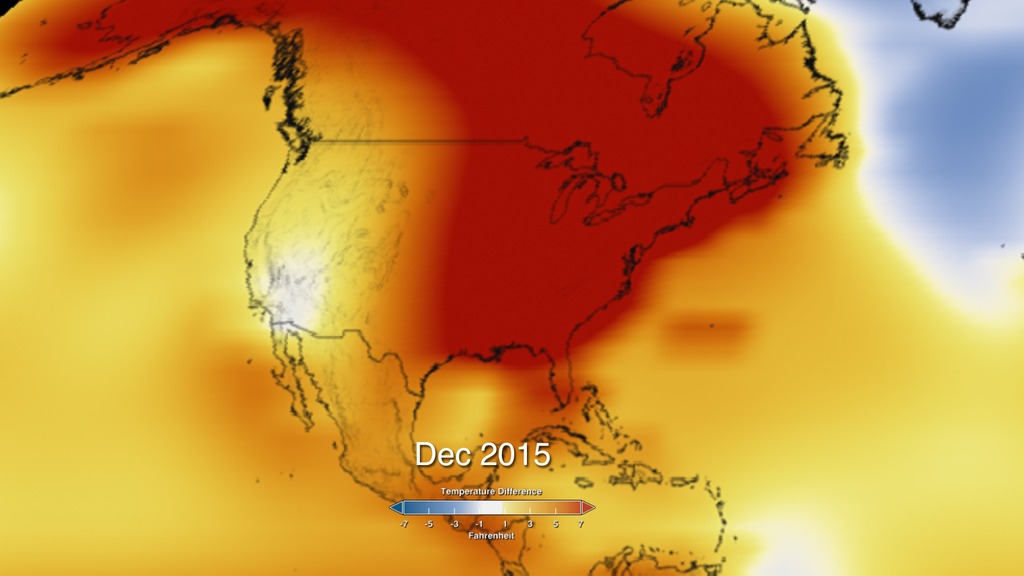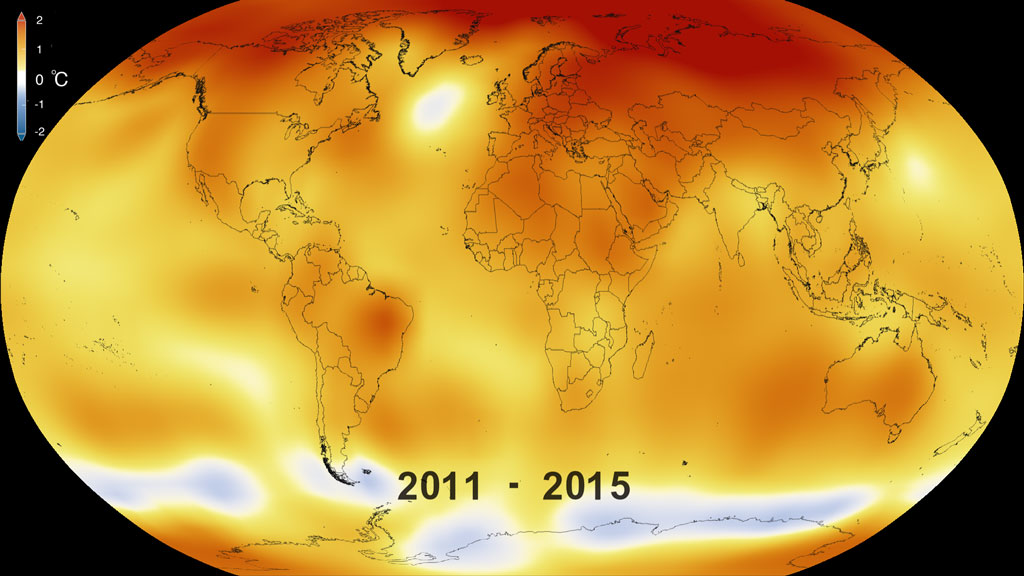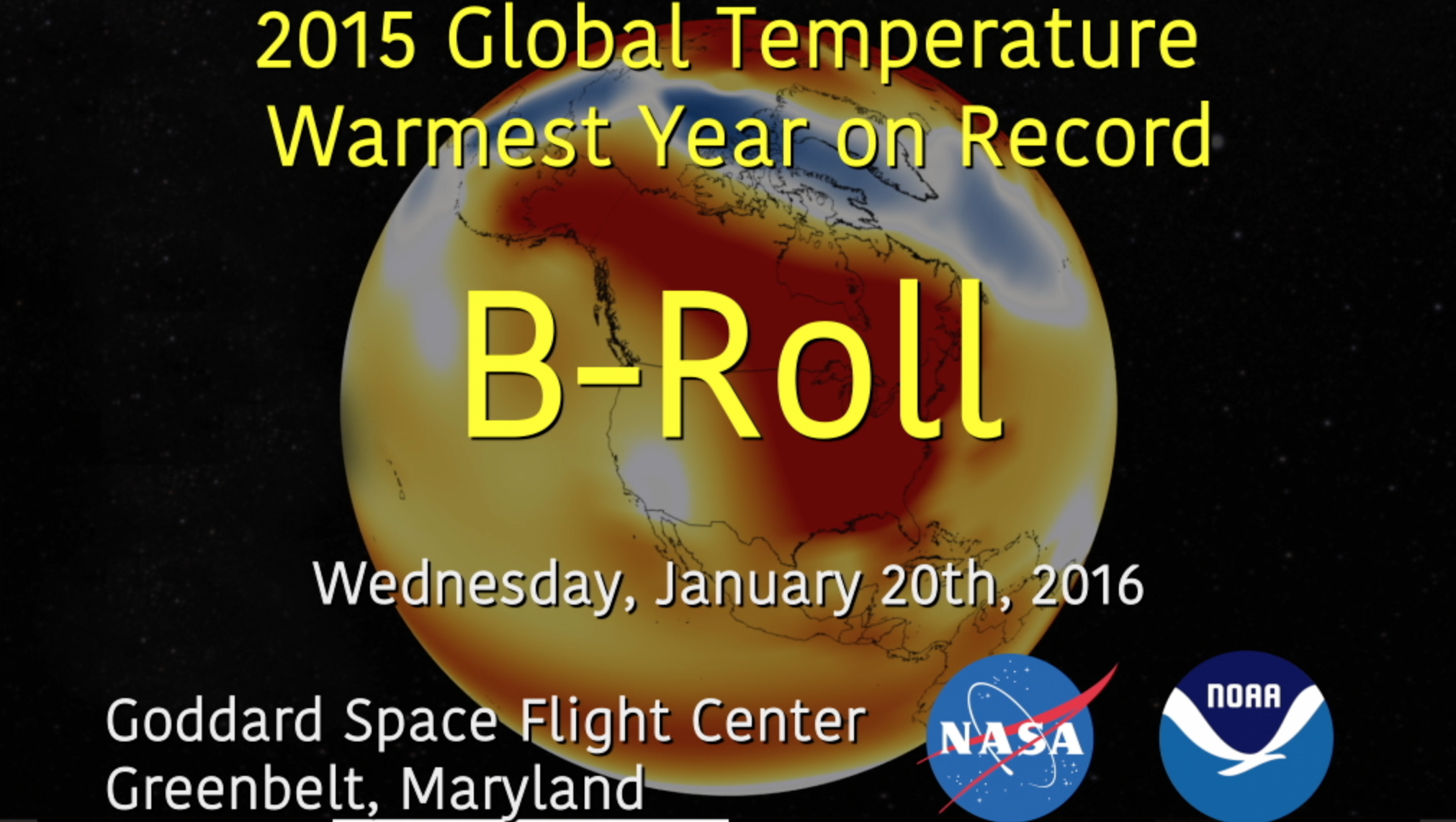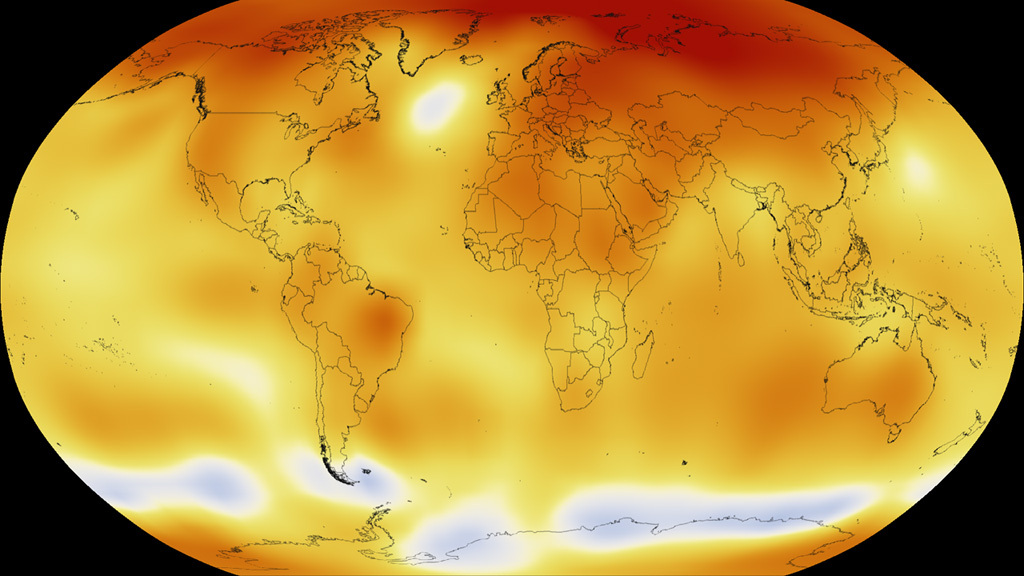Annual Global Temperature, 1880-2015
Graph of annual global temperatures, with respect to a baseline from the 19th century (the average of global annual temperatures from 1880-1899). In Fahrenheit.
Earth's 2015 surface temperatures were the warmest since modern record keeping began in 1880, continuing a long-term warming trend. Most of the warming occurred in the past 35 years, with 15 of the 16 warmest years on record occurring since 2001. Last year was the first time the global average temperatures were more than 1 degree Celsius above the 1880-1899 average, a change largely driven by increased carbon dioxide and other human-made emissions into the atmosphere.
Credits
Please give credit for this item to:
NASA's Goddard Space Flight Center
-
Producer
- Matthew R. Radcliff (USRA)
-
Animator
- Krystofer Kim (USRA)
-
Scientist
-
Gavin A. Schmidt
(NASA/GSFC GISS)
-
Gavin A. Schmidt
(NASA/GSFC GISS)
Release date
This page was originally published on Wednesday, January 20, 2016.
This page was last updated on Wednesday, May 3, 2023 at 1:48 PM EDT.




